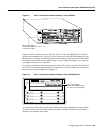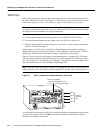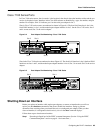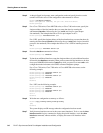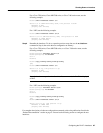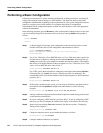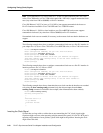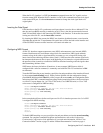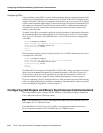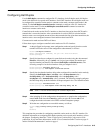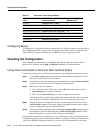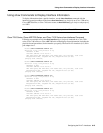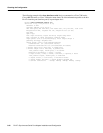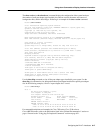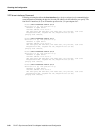
Configuring the PA-4T+ Interfaces 8-11
Setting the Clock Rate
When the PA-4T+ interface is a DTE, the invert-txc command inverts the TxC signal it receives
from the remote DCE. When the PA-4T+ interface is a DCE, this command inverts the clock signal
to the remote DTE port. Use the no invert-txc command to change the clock signal back to its
original phase.
Inverting the Data Signal
If the interface on the PA-4T+ synchronous serial port adapter is used to drive a dedicated T1 line
that does not have B8ZS encoding (a method to avoid 15 zeros), the data stream must be inverted
(both TxD and RxD) either in the connecting CSU/DSU or the interface. To invert the data stream
coming out of the PA-4T+, use the invert data command.
By inverting the HDLC data stream, the HDLC zero insertion algorithm becomes a ones insertion
algorithm that satisfies the T1 requirements. Be careful not to invert data both on the interface and
on the CSU/DSU because two data inversions will cancel each other out.
Configuring NRZI Format
All PA-4T+ interfaces support nonreturn-to-zero (NRZ) and nonreturn-to-zero inverted (NRZI)
formats. Both formats use two different voltage levels for transmission. NRZ signals maintain
constant voltage levels with no signal transitions (no return to a zero voltage level) during a bit
interval and are decoded using absolute values (0 and 1). NRZI uses the same constant signal levels
but interprets the absence of data (a space) at the beginning of a bit interval as a signal transition and
the presence ofdata (a mark)as no transition.NRZI uses relational encodingto decode signalsrather
than determining absolute values.
NRZ format, the factory default on all interfaces, is most common. NRZI format, which is
configured with a software command, is commonly used with EIA/TIA-232 connections in IBM
environments.
To enable NRZI encodingon any interface, specify theslot and portaddress of theinterface followed
by the command nrzi-encoding [mark]. When you have finished with the configuration change,
press Ctrl-Z (hold down the Control key while you pressZ) or enter end to exit configuration mode
and return tothe EXEC command interpreterprompt. In the example that follows,the first serial port
on a PA-4T+ in port adapter slot 1 of a Cisco 7200 series, Cisco uBR7200 series, or Cisco 7100
series router is configured for NRZI encoding:
Router# configure terminal
Enter configuration commands, one per line. End with CNTL/Z.
Router(config)# interface serial 1/0
Router(config-if)# nrzi-encoding
Ctrl-Z
Router#
In the example that follows, the first serial port on a PA-4T+ in interface processor slot 3 of a VIP2
is configured for NRZI encoding:
Router# configure terminal
Enter configuration commands, one per line. End with CNTL/Z.
Router(config)# interface serial 3/1/0
Router(config-if)# nrzi-encoding
Ctrl-Z
Router#
To disable NRZI encoding on a port, specify the slot and port address and use the no nrzi-encoding
command. For complete command descriptions and instructions, refer to the Configuration
Fundamentals Configuration Guide publication. If you need more information, see the “Cisco
Connection Online” section on page vii and the “Related Documentation” section on page vi.



